For Immediate Release: August 29, 2019
Contact: Pete Daniels (202) 408-1711, (301) 442-2249 (c) or [email protected]
Labor Day Weekend 2019:
What you need to know about highway & auto safety laws heading into a busy and dangerous holiday on our roads
As the last summer holiday, Labor Day weekend has always been associated with travel and recreation. Unfortunately, it is also a holiday weekend during which almost 5,000 motor vehicle crash deaths occurred from 2006-2016, many linked to alcohol-impaired driving. Each year Advocates for Highway and Auto Safety (Advocates) releases the Roadmap of State Highway Safety Laws, rating states on critical state traffic safety laws that reduce crashes, injuries and deaths. Motorists this holiday weekend are less protected than they should be due to crucial safety gaps in state laws. To see individual state ratings CLICK HERE.
Proven solutions that reduce drunk driving should be enacted.
- 34 states and DC require interlock ignition devices (IID) for all drunk driving offenders. An IID prevents a car from starting if the driver is impaired. We urge the 16 states missing this law to prioritize passage in the upcoming session.
- In 2018, Utah became the first state to enforce drunk driving laws at .05% blood alcohol concentration (BAC). This important policy recognizes that the probability of a crash rises significantly between .05% and .08% BAC and has been shown to reduce drunk driving deaths in countries where it has been enacted. We urge all states to follow Utah’s leadership and enact this lifesaving law.
- IIDs and .05% BAC laws are critically needed because the rate of alcohol-related traffic fatalities is no longer declining, with an average of 10,000 deaths annually in recent years.
Distracted driving causes thousands of fatal crashes. Stronger laws and enforcement are key solutions.
- 45 states today allow officers to cite someone for texting while driving.
- As wireless communication technology has evolved, so has our use. A 2016 survey conducted by State Farm found that accessing the internet, reading and updating social media networks on a cell phone while driving more than doubled from 2009 to 2016. Additionally, about 10% of those surveyed in 2016 were also playing games on a cell phone while driving.
- Distracted driving laws should be enhanced to account for other distracting device uses such as emailing, watching video, livestreaming and video chatting.
Children are our most vulnerable passengers. They can be better protected through effective child car seat laws.
- Infants and toddlers should remain in rear-facing car seats through age two or longer, but only 15 states and DC have enacted this requirement to date.
- While a majority of states have booster seat laws, only 16 states have laws that provide protection for children until at least age eight and 57 inches in height, as recommended by Advocates and other child safety advocacy organizations.
Seat belts save lives, but gaps in laws remain in many states.
- 31 states are still missing primary enforcement seat belt laws requiring all passengers to be buckled up.
- Lack of restraint use continues to be a major safety issue. Among passenger vehicle occupant fatalities in 2017, almost half (47 percent) were unrestrained when restraint use was known.
- Seat belt use is effective. In 2017, nearly 15,000 lives were saved by seat belt use.
After Labor Day, a number of important safety bills await action in Congress.
Urgent action by Congress is needed to advance bills to: end the ongoing tragedy of children dying in hot cars (Hot Cars Act of 2019, H.R. 3593); improve school bus safety (School Bus Safety Act of 2019, S. 2278/H.R. 3959); prevent risks associated with keyless ignitions (PARK IT Act, S. 543/H.R. 3145); decrease distracted and impaired driving (SAFE TO DRIVE Act, H.R. 2416); reduce the dangers of speeding trucks (Cullum Owings Large Truck Safe Operating Speed Act, S. 2033); ensure that all trucks have collision avoidance technology (Safe Roads Act, H.R. 3773); and, avert deaths and injuries in collisions between cars and trucks without comprehensive underride guards (Stop Underrides Act, S. 665/H.R. 1511).
Additionally, proven vehicle safety technologies that prevent and mitigate crashes should be required in all vehicles and subject to a minimum performance standard. These safety advances will reduce crashes on the roads now as autonomous vehicles (AVs) are developed. Advocates also continues efforts to ensure that AVs will be deployed in a way that provides all road users with adequate safety protections.
We thank the members of Congress leading these safety initiatives and look forward to getting these and other lifesaving measures enacted into law this session.
Commonsense state and federal safety laws save lives, reduce injuries and decrease costs to society. This Labor Day weekend, we urge all drivers to obey speed limits, make sure all passengers are buckled up, drive sober and alert, where a helmet if you’re riding a motorcycle or bicycle, keep eyes on the road and make certain everyone returns home safely throughout the holiday weekend.
###

